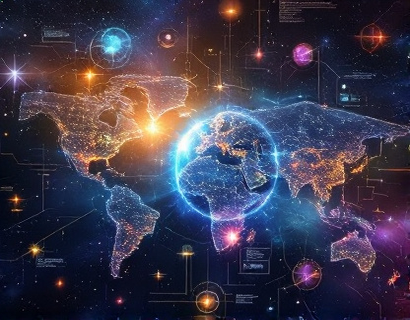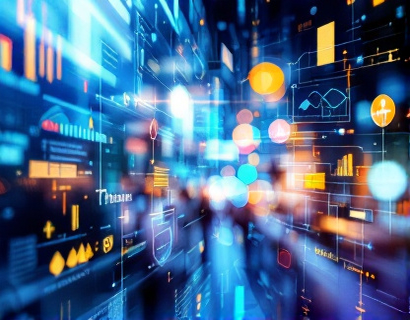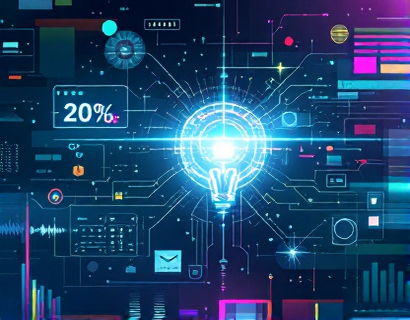Crypto and AI: Pioneering the Next Generation of Digital Innovation
The intersection of cryptocurrency and artificial intelligence (AI) is giving rise to a new era of technological advancements, fundamentally transforming the digital landscape. This synergy is not just about combining two powerful technologies but about creating a synergistic effect that enhances user connectivity, drives growth, and elevates satisfaction within the tech ecosystem. As we explore this dynamic relationship, it becomes evident that the future of digital experiences is being redefined by the integration of blockchain and machine learning.
Understanding the Synergy: Crypto and AI
The fusion of cryptocurrency and AI is built on the foundation of decentralization and intelligence. Cryptocurrencies, with their inherent transparency and security provided by blockchain technology, offer a robust framework for AI applications that require trust, privacy, and decentralized data management. AI, on the other hand, brings the capability to analyze vast amounts of data, learn from patterns, and make decisions with minimal human intervention. When combined, these technologies can create more secure, efficient, and intelligent digital systems.
Enhancing User Connectivity
One of the most significant impacts of merging crypto and AI is the enhancement of user connectivity. Decentralized networks powered by blockchain technology enable peer-to-peer interactions without the need for intermediaries, reducing latency and increasing the speed of transactions. AI algorithms can optimize these networks by predicting user behavior, personalizing experiences, and automating processes. For instance, AI-driven chatbots can provide instant customer support, while machine learning models can enhance recommendation systems, ensuring users are connected to the most relevant content and services.
Moreover, the use of decentralized identity solutions, powered by AI, allows users to maintain control over their personal data. These solutions use blockchain to create secure and verifiable identities, reducing the risk of data breaches and enhancing privacy. AI can further improve this by analyzing user preferences and behaviors to offer tailored identity management options, making the digital experience more seamless and secure.
Driving Growth through Decentralized Economies
The integration of crypto and AI is also revolutionizing economic models by enabling decentralized economies. Smart contracts, self-executing contracts with the terms directly written into code, are powered by AI to automate and enforce agreements without the need for intermediaries. This not only reduces costs but also increases efficiency and transparency. AI can analyze market trends, predict economic shifts, and optimize resource allocation within these decentralized systems, fostering sustainable growth.
Tokenomics, the study of token economics in blockchain ecosystems, benefits greatly from AI insights. AI algorithms can model token supply and demand, optimize token distribution, and predict market dynamics. This data-driven approach ensures that tokens are used effectively to incentivize desired behaviors, such as content creation, network participation, and innovation. By leveraging AI, projects can design more robust and adaptive economic models, driving long-term growth and stability.
Improving Content Creation and Distribution
The content creation and distribution landscape is undergoing a transformation thanks to the combination of crypto and AI. Decentralized platforms, supported by blockchain, allow creators to publish and monetize their content directly, bypassing traditional gatekeepers. AI enhances this process by curating and recommending high-quality content based on user preferences, ensuring that creators receive the recognition and rewards they deserve.
AI-driven content generation tools can assist creators in producing high-quality content more efficiently. For example, AI-powered writing assistants can help in drafting articles, while machine learning algorithms can generate music and visual content. These tools not only save time but also open up new creative possibilities. Additionally, blockchain ensures that content creators are fairly compensated through transparent and automated royalty distribution systems, powered by AI to manage complex payment structures.
Enhancing Security and Trust
Security and trust are paramount in the digital world, and the combination of crypto and AI addresses these concerns effectively. Blockchain's immutable ledger provides a tamper-proof record of transactions, while AI can detect and prevent fraudulent activities in real-time. Machine learning models can analyze patterns to identify anomalies and potential threats, enhancing the overall security of decentralized systems.
AI also plays a crucial role in ensuring data integrity and privacy. By using advanced encryption techniques and zero-knowledge proofs, AI can verify transactions and data without revealing sensitive information. This ensures that users can transact and share data with confidence, knowing that their privacy is protected. Decentralized identity solutions, enhanced by AI, further strengthen this by giving users control over their personal data and how it is used.
Optimizing Resource Management
The computational demands of AI, especially in training complex models, require significant resources. Blockchain and AI can optimize resource management by creating decentralized computing networks. These networks, often referred to as decentralized cloud computing, allow for the efficient distribution of computational tasks across a network of nodes. AI can optimize the allocation of resources, ensuring that tasks are processed efficiently and cost-effectively.
Energy consumption is a critical concern in the AI and blockchain spaces. AI can help reduce the environmental impact by optimizing the energy usage of mining operations and data centers. For instance, AI can predict energy prices and adjust mining schedules accordingly, or optimize the placement of data centers to utilize renewable energy sources more effectively. This not only makes the systems more sustainable but also reduces operational costs.
Personalized User Experiences
One of the most exciting applications of crypto and AI is the creation of personalized user experiences. AI algorithms can analyze vast amounts of user data to understand preferences, behaviors, and needs. This data can be used to tailor digital experiences, from personalized recommendations to customized interfaces. Blockchain ensures that user data is securely stored and managed, giving users more control over their information.
For example, in decentralized social media platforms, AI can curate feeds based on user interests and interactions, while blockchain ensures that users receive tokens or other incentives for engaging with content. This creates a more engaging and rewarding experience, encouraging active participation and community building. AI-driven analytics can also help platforms refine their offerings, ensuring that they meet the evolving needs of their users.
Challenges and Considerations
While the potential of combining crypto and AI is immense, there are several challenges that need to be addressed. Regulatory uncertainty remains a significant hurdle, as governments worldwide are still grappling with how to regulate these emerging technologies. Ensuring compliance while fostering innovation is a delicate balance that requires collaboration between stakeholders.
Technical challenges, such as scalability and interoperability, also need to be overcome. Blockchain networks must be able to handle the increased load from AI applications, and different blockchain platforms need to work seamlessly together. Continuous research and development are essential to address these issues and unlock the full potential of this synergy.
Another consideration is the ethical use of AI. As AI becomes more integrated into digital systems, ensuring that it is used responsibly and ethically is crucial. This includes addressing biases in AI algorithms, ensuring transparency in decision-making processes, and protecting user privacy. The combination of crypto and AI can enhance these efforts by providing transparent and auditable systems, but it requires a commitment to ethical standards from all participants.
Conclusion
The convergence of cryptocurrency and artificial intelligence is paving the way for a new era of digital innovation. By enhancing user connectivity, driving growth through decentralized economies, improving content creation and distribution, ensuring security and trust, optimizing resource management, and personalizing user experiences, this synergy is reshaping the tech ecosystem. As we continue to explore and develop these technologies, the potential for enhanced digital experiences is vast. The future is bright, and the path forward is being paved by the innovative fusion of crypto and AI.










































